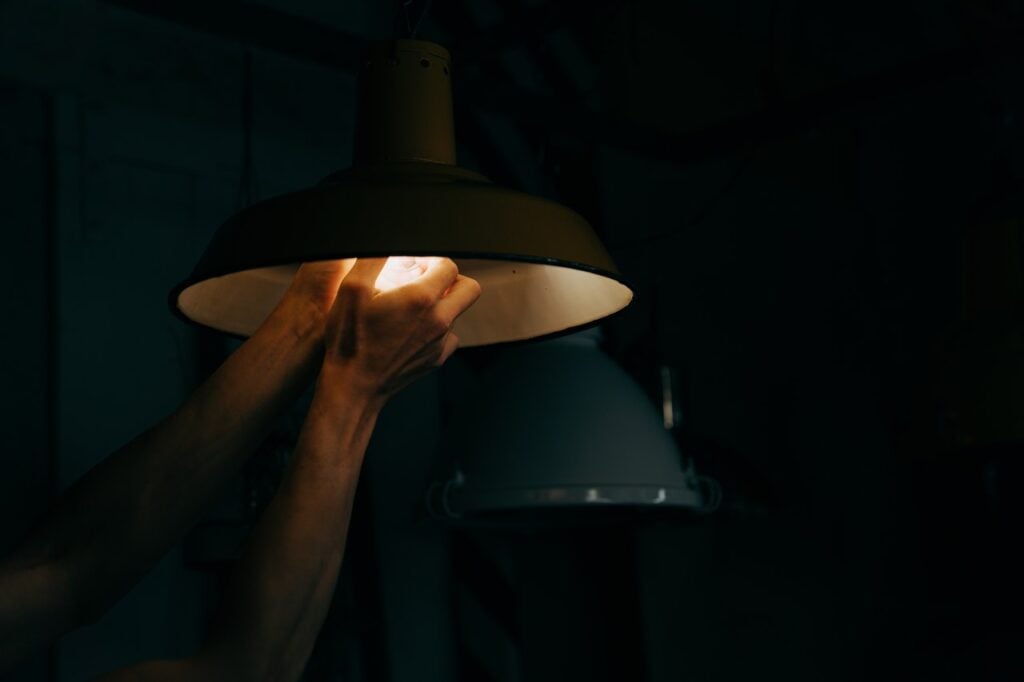As smart home devices become more and more popular, the choice for consumers is also increasing. There are now hundreds if not thousands of different smart lighting solutions available in the market.
That said, they’re all different kinds of lights. In this article, we’re comparing soft white LEDs to warm white LEDs to help you make a better choice.
Also read: Could not communicate with your Google Home mini: 12 Fixes
Colour temperature
Colour temperature is one of the most important differences between soft and warm lights. Each type of white bulb represents a particular reference point on the Kelvin scale, which measures a colour temperature.

The term colour temperature actually originates from incandescent bulbs where it refers to the colour of the metal element inside the bulb, which determines the colour of the light. The same thing applies to LEDs, a value on the Kelvin scale can determine the coolness or warmth of light. Here are some common colour temperatures.
- Soft White (2700 to 3000 Kelvin)
- Warm White (3000 to 4000 Kelvin)
- Cool White (4000 to 5000 Kelvin)
- Daylight White (5000 to 6500 Kelvin)
The higher the colour temperature, the warmer or yellower the light gets. On the contrary, the lower the colour temperature, the cooler or bluer a light gets. Depending on where you’re installing these lights, you need to make a decision as the colour temperature will drastically affect the aesthetics and overall mood of the room.
Lumens
Lumen is a measure of a bulb’s brightness. While it isn’t exactly relevant to warm or soft lights, the brightness of a bulb can impact the colour temperature, which can in turn affect how your eyes perceive the light.
The higher the lumen rating, the brighter the light can get which in turn makes the light brighter. Soft lights are usually dimmer or lower in terms of their lumen rating and warm lights are the exact opposite.
Most smart lights do have brightness control built-in, so it’s best to pick bulbs with a higher lumen rating so that you have extra headroom when it comes to brightness.
Wattage
Wattage doesn’t determine the brightness or the colour of your lights, but it does define how much power a particular light bulb consumes. It’s a common misconception that a higher wattage bulb is often brighter, but that’s not the case with modern LED lights.

When deciding between warm or soft lights, just make sure to pick a wattage that isn’t too high. A higher wattage bulb will drive up your electricity consumption and can turn out to be more expensive to run. LEDs are quite power efficient so you’ll get far more light from a lower wattage (10-12W) bulb as compared to something like an incandescent bulb.
The sweet spot for warm lights is around 10-12W while soft lights can get away with lower wattage.
Customisation
A lot of smart bulbs often come with full RGB colours as well as light temperature control meaning one bulb can serve multiple purposes. That said, most RGB bulbs will not have the white light range of dedicated warm or soft light bulbs, so you give up either colour temperature or brightness in favour of versatility.
Which one should you pick?
The final decision comes down to where you’re putting the lights and how you want them to affect the room. We recommend the following.
- Warm lights: Living areas, kitchens, bedrooms and generally spaces which are meant to be relaxing.
- Soft (cool) lights: Bathrooms, office spaces, garages or anywhere else where you need to be slightly alert and aware of your surroundings.
Also read: Top 7 smart home apps for iPhone and Android users






